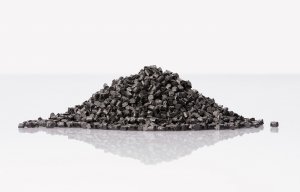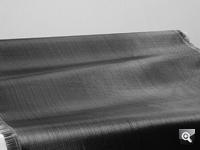
New thermoplastic recycling solution from Toho Tenax Europe
New 60 gsm fabric is just 0.06mm thick Teijin’s Toho Tenax Co. is to start selling a carbon fibre fabric from March this year that is says is less than half the weight of conventional lightweight carbon fibre fabrics. The company claims the new fabric, which has been developed with Sakai Ovex Co., Ltd. and is used for forming prepregs, will help further reduce the weight of composite products. This, the company says, makes it ideal for high-strength, low-weig

26th February 2010
Innovation in Textiles
|
Osaka
 New 60 gsm fabric is just 0.06mm thick
New 60 gsm fabric is just 0.06mm thickTeijin’s Toho Tenax Co. is to start selling a carbon fibre fabric from March this year that is says is less than half the weight of conventional lightweight carbon fibre fabrics.
The company claims the new fabric, which has been developed with Sakai Ovex Co., Ltd. and is used for forming prepregs, will help further reduce the weight of composite products. This, the company says, makes it ideal for high-strength, low-weight applications where design and style count, ranging from golf club and tennis racket shafts to personal computer casings.
Toho Tenax is targeting annual sales of more than 300,000m² by its fiscal year ending in March 2013, aiming to expand its carbon fibres business for prepreg use.
The fabric is made with Toho Tenax’s new carbon fibre yarn designed for making ultra-thin fabrics. Using Sakai Ovex’s yarn-spreading technology, development of a thin fabric measuring just 0.06 mm in thickness has been achieved. The new fabric weighs only 60 gsm, or about half the weight of the lightest carbon fibre fabrics currently available, Toho Tenax says.
A fabric prepreg is typically used on top of a prepreg layer for the development of a composite product in order to maintain performance and prevent cracking during drilling and other machining. Reducing the weight and thickness of such fabrics helps to lower the composite product’s weight as well as allowing the original prepreg layer to be thicker and thereby enhance the entire rigidity without increasing the total thickness of the product. Moreover, thinly spread yarns generate less waviness in the fabric, which improves translation of fibre strength into the composite product, the company says.

Business intelligence for the fibre, textiles and apparel industries: technologies, innovations, markets, investments, trade policy, sourcing, strategy...
Find out more